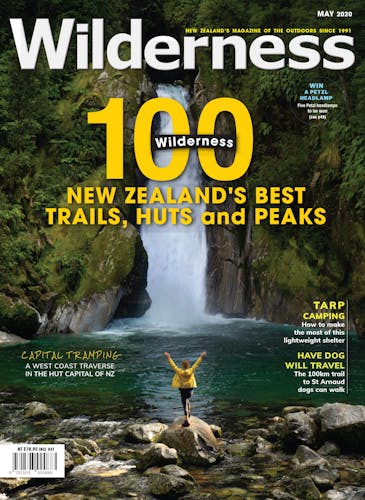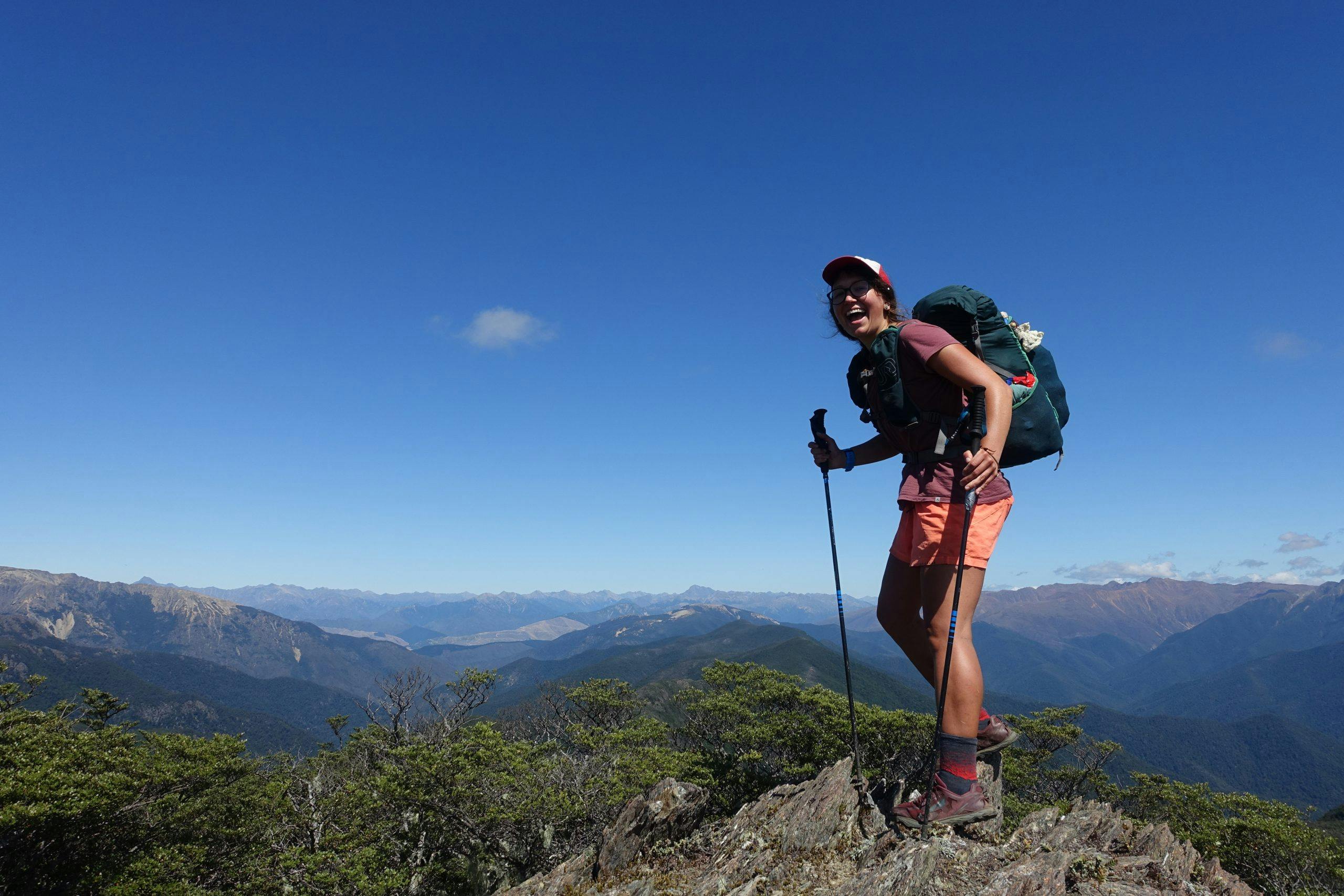Among the hundreds of people attempting the Te Araroa Trail this year, Ieva Laucina stood out like a sore thumb. That’s because she packed everything she needed into a 35-litre daypack.
First, it was the incredulous stares, then came the same question, repeated over and again by almost everyone Ieva Laucina met on the Te Araroa Trail: “Is this all you have?”
You might have asked it too had you met Laucina, who hails from Latvia and carried on her back a 700g 35-litre pack more commonly used by trail runners or day-trippers. Inside, she had crammed all she would need for her three-month length-of-New Zealand hike.
Laucina, a self-described trail runner, had barely done any hiking before she started out on the Te Araroa Trail from Bluff in January. That’s why she found the goggled eyes and questions about what she was carrying so unnerving.
“For weeks, I was thinking, is this OK, is there some standard I should have?” she says.
Laucina’s journey to the TA began in late 2018. On an extended visit to Wanaka, she regularly ran the Breast Hill Track overlooking Lake Hāwea and would meet hikers carrying “huge packs”. Curious about what they were doing, she chatted with them and that’s how she first learnt about the TA.
She began to wonder if she could do the long-distance hike, too, but being a trail runner she couldn’t bear the thought of carrying a heavy pack – and everyone she met on Breast Hill carried a heavy pack. “When the person’s pack is sticking above their head, you can see it is heavy,” she says.
Willing to go without luxuries like a spare set of clothes or a Kindle e-reader in exchange for the freedom of travelling light and fast, she spent months researching gear and hunting for the lightest and smallest of everything she would need. She finally settled on an Ultimate Direction vest pack, a one-person Big Agnes tent, Jetboil stove and a Sea to Summit sleeping bag and mat. She wore running shoes and packed a few extra items of merino clothing. All up, her base pack weight was 6.3kg and with food and water it came in at well under 10kg.
Everyone Laucina met was instantly curious about what she was packing and they were always surprised when they compared items.
“They would ask what do I have that they don’t and that was when people would have the Kindle, nice city clothes, an extra pair of shoes and some additional things you can survive without,” she says.
The gear they had in common was invariably less compact and heavier than the items she carried.
“I sometimes felt bad because my pack is so light, but I would say, you chose to have this because you want more comfort, my comfort is to be able to go light.”
Going light meant Laucina subsisted on a diet of noodles, couscous, dried fruit and nuts and dehy peas which “make your mashed potatoes more tasty”. She had so few clothes that whenever she did her laundry, she would wait in her wet weather gear for her washing to dry. At a hostel in Hanmer, she had to walk around barefoot because she wasn’t allowed to wear her trail shoes inside the building.
Laucina doesn’t think she would have enjoyed the trail more by carrying a few luxury items, though her biggest regret was not packing more socks – she had three pairs – because she hated having to put on wet socks each morning. If her pack had been any heavier, she doubts she would have even started the TA.
“My passion is running and I just couldn’t imagine myself in the Motatapu Valley or Waiau Pass and not being able to run those really nice downhills,” she says.
Her light pack gave her the freedom to do as she pleased. “If I wanted to run, I ran, if I wanted to walk, I walked. Fast walking and running give you more freedom to go wherever you like – you can climb up a hill to view the sunset and decide, OK I’m going to camp here.”
Laucina actually walked much of the trail, often doing three days of walking, a day or two of fast walking and then a few days of running. Much depended on the condition of the trail. The Richmond Range was a lot of uphill, so she walked that over six days – the longest section of trail between towns – which meant Laucina had to carry a lot of extra food in her pack.
This pushed her pack weight to more than 10kg – a burden for someone used to going much lighter.
She found room for all the extra food required on this section by strapping her tent to the outside of the pack. “I was really eating a lot in the first days to get rid of the weight – I was so annoyed at how heavy it was,” she says.
“Finally, on day three, my tent moved into my backpack and I carried on faster and lighter.”
Laucina finished the South Island section on March 21 – two days before the country went into Alert Level 4 lockdown. She briefly debated whether to continue on to the North Island or return to her friends in Wanaka who had offered her a place to stay.
“My intuition was saying I needed to find a place to lockdown,” she says, so that’s what she did.
She left some of her trail friends to reach Wanaka and it’s the memory of these people that she dwells on now she is in lockdown.
“In the end, I got to learn that it’s not always about going fast,” she says. “It’s also about being with the people you meet on the trail.”








